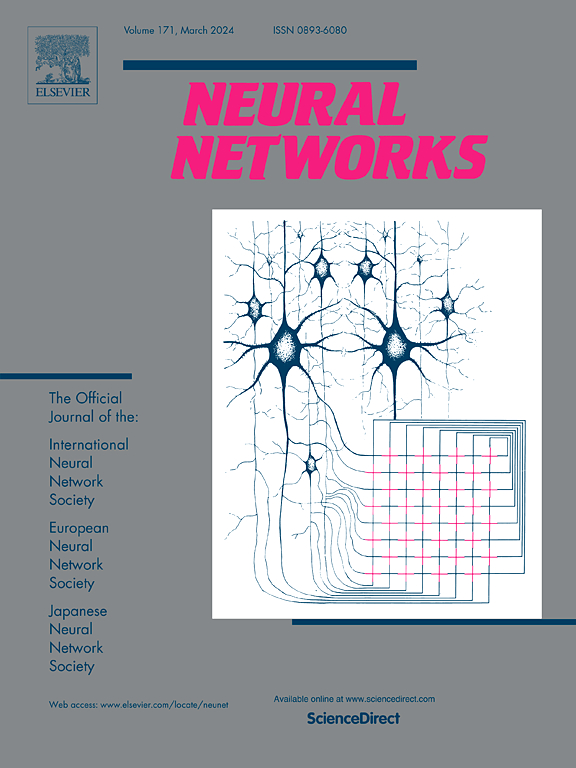MIU-Net: Advanced multi-scale feature extraction and imbalance mitigation for optic disc segmentation
IF 6
1区 计算机科学
Q1 COMPUTER SCIENCE, ARTIFICIAL INTELLIGENCE
引用次数: 0
Abstract
Pathological myopia is a severe eye condition that can cause serious complications like retinal detachment and macular degeneration, posing a threat to vision. Optic disc segmentation helps measure changes in the optic disc and observe the surrounding retina, aiding early detection of pathological myopia. However, these changes make segmentation difficult, resulting in accuracy levels that are not suitable for clinical use. To address this, we propose a new model called MIU-Net, which improves segmentation performance through several innovations. First, we introduce a multi-scale feature extraction (MFE) module to capture features at different scales, helping the model better identify optic disc boundaries in complex images. Second, we design a dual attention module that combines channel and spatial attention to focus on important features and improve feature use. To tackle the imbalance between optic disc and background pixels, we use focal loss to enhance the model’s ability to detect minority optic disc pixels. We also apply data augmentation techniques to increase data diversity and address the lack of training data. Our model was tested on the iChallenge-PM and iChallenge-AMD datasets, showing clear improvements in accuracy and robustness compared to existing methods. The experimental results demonstrate the effectiveness and potential of our model in diagnosing pathological myopia and other medical image processing tasks.
MIU-Net:用于视盘分割的先进多尺度特征提取和不平衡缓解技术
病理性近视是一种严重的眼部疾病,可引起视网膜脱离和黄斑变性等严重并发症,对视力构成威胁。视盘分割有助于测量视盘的变化并观察周围视网膜,从而帮助早期发现病理性近视。然而,这些变化使分割变得困难,导致精确度水平不适合临床使用。针对这一问题,我们提出了一种名为 MIU-Net 的新模型,它通过几项创新提高了分割性能。首先,我们引入了多尺度特征提取(MFE)模块,以捕捉不同尺度的特征,帮助模型更好地识别复杂图像中的视盘边界。其次,我们设计了一个双注意力模块,将通道注意力和空间注意力结合起来,以聚焦重要特征,提高特征利用率。为了解决视盘像素和背景像素之间的不平衡问题,我们使用焦点损失来增强模型检测少数视盘像素的能力。我们还应用了数据增强技术来增加数据多样性,解决训练数据不足的问题。我们的模型在 iChallenge-PM 和 iChallenge-AMD 数据集上进行了测试,结果显示,与现有方法相比,我们的模型在准确性和鲁棒性方面都有明显改善。实验结果证明了我们的模型在诊断病理性近视和其他医学图像处理任务中的有效性和潜力。
本文章由计算机程序翻译,如有差异,请以英文原文为准。
求助全文
约1分钟内获得全文
求助全文
来源期刊

Neural Networks
工程技术-计算机:人工智能
CiteScore
13.90
自引率
7.70%
发文量
425
审稿时长
67 days
期刊介绍:
Neural Networks is a platform that aims to foster an international community of scholars and practitioners interested in neural networks, deep learning, and other approaches to artificial intelligence and machine learning. Our journal invites submissions covering various aspects of neural networks research, from computational neuroscience and cognitive modeling to mathematical analyses and engineering applications. By providing a forum for interdisciplinary discussions between biology and technology, we aim to encourage the development of biologically-inspired artificial intelligence.
 求助内容:
求助内容: 应助结果提醒方式:
应助结果提醒方式:


